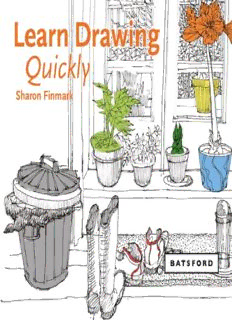
Learn Drawing Quickly PDF
Preview Learn Drawing Quickly
Learn Drawing Quickly Sharon Finmark Learn Drawing Quickly Contents Introduction 1. Materials and mark-making 2. Shape and form 3. Tone and form 4. Composition 5. Basic perspective 6. Drawing styles 7. Subjects to draw Index Introduction A drawing may be a swift sketch, a careful study, a visual diary of your life or just something done for sheer creative pleasure. Drawing is all about ways of seeing and methods of translating that on to paper. This book starts with simple exercises and ideas, encouraging an inventive approach to composition and helping you to develop your own personal style. You will explore the shapes of everything you might choose to draw and the materials that suit both you and your subjects, learning how to build up lively drawings where all the elements combine to make interesting and successful pictures. Wine bottles in coloured pencils. I overlayed several colours to create the deep reds of the wine and the white of the paper showed up the highlights on the bottles. Construction site in the City in brush pen and watercolour. The red of the crane was a great contrast to the grey of the sky. Chapter 1 Materials and mark-making The range of drawing tools is wide, and it’s exciting to explore what the different media can do. In this book you’ll discover the textures that are possible and their potential use, so that you can build up a vocabulary of marks. Popular and easy to obtain drawing tools include pencils, charcoal, chalks, pastels, pens and paint applied with a brush or pen. You will also need erasers and cartridge paper, both textured and tinted. A selection of pens, pencils, paints and inks can be acquired inexpensively, along with a few essential accessories. Their familiarity makes it easy to begin drawing. Drawing materials Soft-textured drawing tools include square-ended pastel, conté, compressed charcoal, fine charcoal, pencil and fat graphite pencil.
Description: